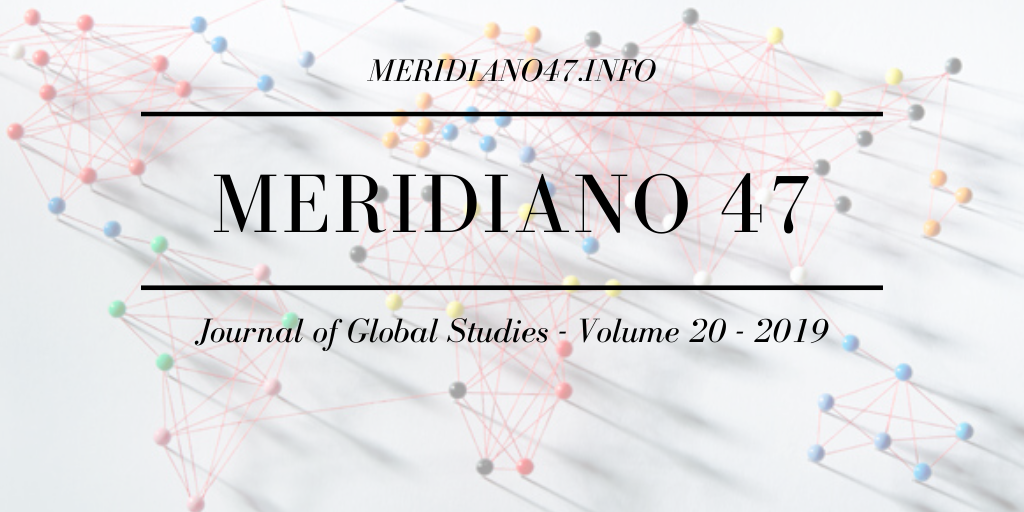O Tratado sobre a Proibição de Armas Nucleares (TPAN): inovação no desarmamento nuclear ou esforço inócuo?
DOI:
https://doi.org/10.20889/M47e20012Palavras-chave:
Tratado sobre a Proibição de Armas Nucleares, Armas nucleares, Desarmamento, Não-proliferaçãoResumo
O Tratado sobre a Proibição de Armas Nucleares (TPAN) foi aberto para assinaturas em 2017, e em outubro de 2019 o tratado tinha 79 signatários. No entanto, nenhum Estado Nuclearmente Armado assinou o tratado. Este artigo argumenta que o TPAN é tanto uma inovação no regime de não proliferação de armas nucleares quanto um tratado inadequado para atingir seu objetivo devido à falta de apoio das grandes potências do sistema internacional, bem como à ausência dos principais países capazes de determinar ou influenciar o sistema internacional em questões relacionadas a armas nucleares. Na primeira seção do artigo, o escopo e os objetivos do tratado são abordados, e a seção seguinte apresenta uma análise dos perfis dos signatários do TPNW. A última seção contém uma visão prospectiva do tratado.
Downloads
Referências
Austria. 2014. Federal Ministry for Europe, Integration and Foreign Affairs. Vienna Conference on the Humanitarian Impact of Nuclear Weapons. <https://www.bmeia.gv.at/fileadmin/user_upload/Zentrale/Aussenpolitik/Abruestung/HINW14/ViennaConference_BMEIA_Web_final.pdf>. Accessed: July 19, 2019.
Bower, Adam Stephen. 2017. Norms without the Great Powers: International Law and Changing Social Standards in World Politics. Oxford: Oxford University Press.
Brunnée, Jutta and Toope, Stephen J. (2010). Legitimacy and Legality in International Law: an Interactional Account. Cambridge; New York: Cambridge University Press.
De Nevers, Renee. (2007) “Imposing International Norms: Great Powers and Norm Enforcement”. International Studies Review 9: 53”“80.
France, United Kingdom & United States, Explanation of Vote (statement, United Nations, New York, NY, October 27, 2016). <http://www.icanw.org/wp-content/uploads/2016/10/France-UK-and-US-EOV.pdf>.
Ikenberry, G. John and Kupchan, Charles A. (1990). “Socialization and Hegemonic Power”. International Organization 44: 283”“315.
International Atomic Energy Agency (IAEA). 2018. Nuclear Power Reactors in the World. Reference Data Series No. 2, 2018 Edition. Vienna: Printed by the IAEA in Austria.
International Atomic Energy Agency (IAEA). Power Reactor Information System (PRIS). The Database on Nuclear Power Reactors. <https://pris.iaea.org/PRIS/home.aspx>. Accessed February 28, 2019.
International Atomic Energy Agency (IAEA). Research Reactor Database.
<https://nucleus.iaea.org/RRDB/RR/ReactorSearch.aspx>. Accessed October 15, 2019.
Keohane, Robert O. 1969. “Lilliputians' Dilemmas: Small States in International Politics.” International Organization, Volume 23, Issue 02, March 1969: 291-310. doi: 10.1017/S002081830003160X.
Perkovich, George. 2017. The Nuclear Ban Treaty: What Would Follow? Carnegie Endowment for International Peace. <https://carnegieendowment.org/files/CP_309_Perkovich_Nuclear_Treaty_Final_Web.pdf>.
Sauer, T. 2016. “It’s time to outlaw nuclear weapons.” The National Interest, April 18, 2016. <https://nationalinterest.org/feature/its-time-outlaw-nuclear-weapons-15814>.
STATISTA. The 15 countries with the highest military spending worldwide in 2017 (in billion U.S. dollars). <https://www.statista.com/statistics/262742/countries-with-the-highest-military-spending/>. Accessed July 24, 2019.
The World Bank. GDP Rank. Gross Domestic Product 2017. <https://databank.worldbank.org/data/download/GDP.pdf>. Accessed July 23, 2019.
United Nations. U.N. General Assembly. Resolution A/RES/71/75 adopted on 5 December 2016. <http://www.un.org/en/ga/search/view_doc.asp?symbol=A/RES/71/75>.
United Nations. General Assembly. Resolution A/RES/71/258 adopted on 23 December 2016. <http://www.un.org/en/ga/search/view_doc.asp?symbol=A/RES/71/258>.
United Nations Office for Disarmament Affairs (UNODA). Treaty on the Non-Proliferation of Nuclear Weapons, Text of the Treaty. <https://www.un.org/disarmament/wmd/nuclear/npt/text/>. Accessed January 19, 2019.
United Nations Office for Disarmament Affairs (UNODA). Treaty on the Prohibition of Nuclear Weapons - TPNW. Status of the Treaty. <http://disarmament.un.org/treaties/t/tpnw>. Accessed July 19, 2019.
United Nations Office for Disarmament Affairs (UNODA). Treaty on the Prohibition of Nuclear Weapons - TPNW. Text of the Treaty. <http://disarmament.un.org/treaties/t/tpnw/text>. Accessed July 19, 2019.
United Nations Office for Disarmament Affairs (UNODA). Treaty on the Prohibition of Nuclear Weapons - TPNW. Treaty Overview. <https://www.un.org/disarmament/wmd/nuclear/tpnw/>. Accessed July 19, 2019.
United Nations Treaty Collection (UNTC). Convention on the Prohibition of the Use, Stockpiling, Production and Transfer of Anti-Personnel Mines and on their Destruction. <https://treaties.un.org/Pages/ViewDetails.aspx?src=IND&mtdsg_no=XXVI-5&chapter=26&clang=_en>. Accessed October 15, 2019.
United Nations Treaty Collection (UNTC). Rome Statute of the International Criminal Court. <https://treaties.un.org/pages/ViewDetails.aspx?src=TREATY&mtdsg_no=XVIII-10&chapter=18&lang=en>. Accessed October 15, 2019.
Worldometers. Countries in the world by population (2018). <http://www.worldometers.info/world-population/population-by-country/>. Accessed July 24, 2019.
World Nuclear Association. Nuclear Power in World Today. <http://www.world-nuclear.org/information-library/current-and-future-generation/nuclear-power-in-the-world-today.aspx>. Accessed July 21, 2019.
World Population Review. 2019 World Population by Country. <http://worldpopulationreview.com/>. Accessed July 24, 2019.



